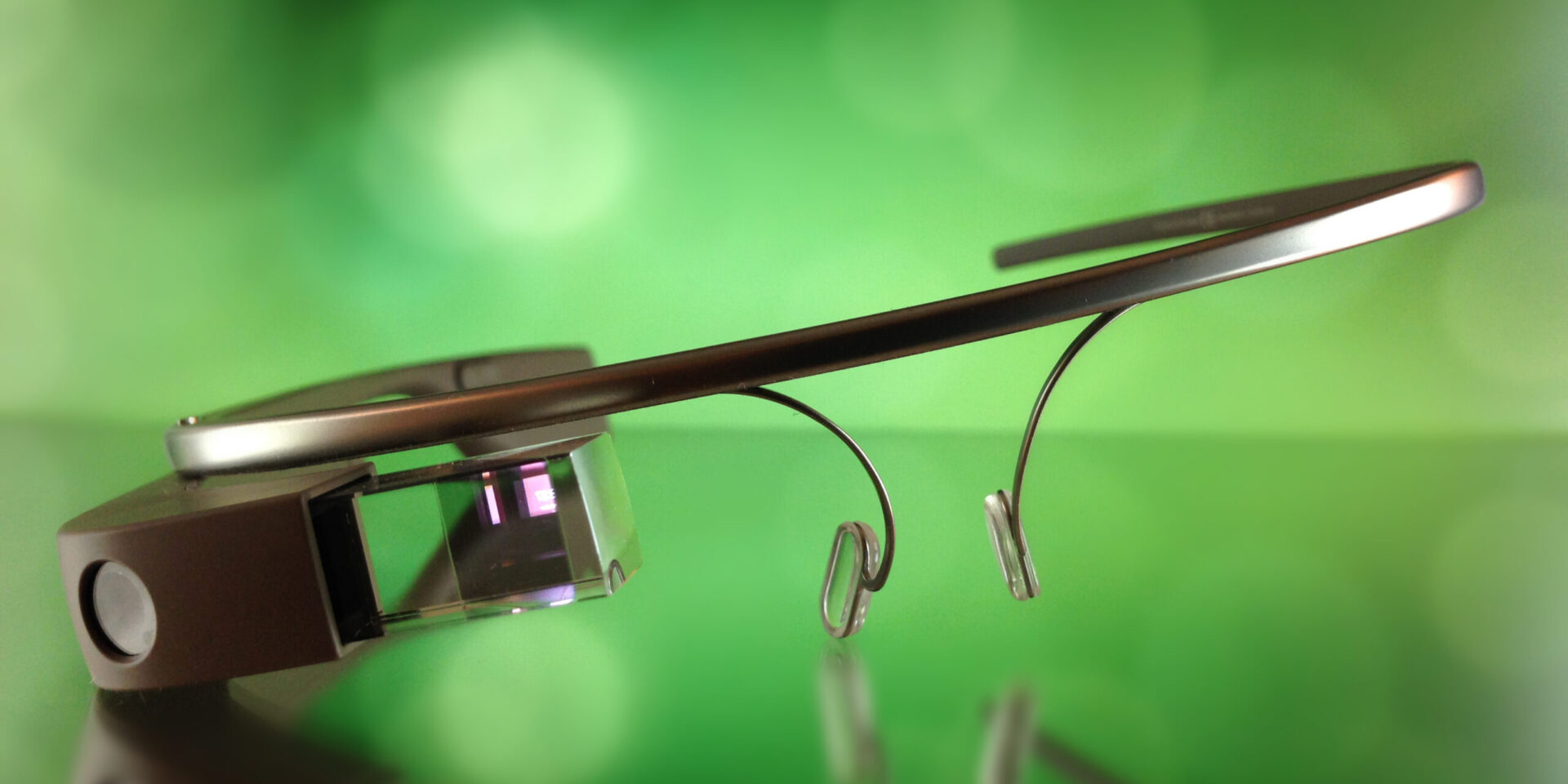Why did Google Glass fail? A look back at the rise and fall of Google’s smart glasses
In early 2013, Google unveiled a vision of the future – augmented reality glasses called Google Glass that put a computer and camera right on your face. These futuristic-looking smart glasses promised to change the way we interact with information and connect with each other.
However, despite years of development and hype surrounding its potential, Google Glass never caught on with consumers and was seen as a costly flop. Just a few years after its launch, Google ceased production of Glass in January 2015.
So what happened with Google Glass? Why did such an ambitious and forward-thinking product fail to achieve mainstream success? Let’s take a look back at the short-lived saga of Google Glass to understand the reasons behind its demise.
The promise and hype of Google Glass
When Google Glass was first unveiled, it sparked major excitement about the possibilities of smart eyewear and hands-free computing. Here was a wearable computer with an optical head-mounted display that lets you surf the web, take pictures and videos, translate conversations in real-time, get directions, and more – all controlled by voice commands and simple swipes on the side of the glasses.
For tech enthusiasts, Google Glass signaled a sci-fi future coming to life. The media hype cycle went into overdrive about how Glass would revolutionize our daily lives. Doctors could livestream surgeries, reporters could broadcast breaking news as it happened, travelers could access guides and translations on the go – the possibilities seemed endless.
Google also promoted Glass as a bold, experimental project to test new wearable computing ideas through its Google X research team. As an ambitious “moonshot”, Google gave Glass an aura of exclusivity – at first, it was strictly available only to developers and “Glass Explorers” willing to pay $1,500 for an early prototype version.
With all this intrigue and early adopter exclusivity surrounding Google Glass, expectations were sky-high for its game-changing impact. But as we now know, these lofty hopes would come crashing down to earth.
The UX challenges of Google Glass
While the hype cycle was in overdrive, Google Glass was suffering from fundamental user experience issues that would greatly limit its appeal.
One major UX hurdle was the steep learning curve. It took time to get used to speaking commands and navigating the interface projected in your field of vision via the tiny screen above your right eye. Basic tasks like searching, sharing, and navigation that seem simple on a smartphone suddenly became clumsy and awkward. The user interface and voice recognition technology still felt unrefined.
The way Google Glass visibly augmented reality was also jarring. Having notifications, images, and information pop up unexpectedly in your line of sight was distracting and created a disconnected, zombie-like feeling. It isolated users from their surroundings instead of seamlessly integrating information.
And of course, the unusual eyewear design led to obvious issues. It looked strange to have an awkward glass cube and camera attached to your glasses. It was not sleek, stylish, or discreet. This unconventional look made Google Glass visually unappealing as a mainstream consumer product.
Overall, using Google Glass felt unnatural and intrusive rather than immersive. The technology was not yet seamless enough to make augmented reality feel integral to daily life. It imposed itself rather than assisted naturally.
Another factor that poisoned Google Glass was the significant privacy fears and social stigma it generated.
Having a head-worn computer with a camera made Google Glass feel creepy and potentially threatening. People worried about being recorded without consent by Glass wearers. Interactive art installations and businesses banned Google Glass over privacy violations. Some called Glasswearers “glassesholes” for invading privacy.
Google Glass came to represent a big brother-like loss of privacy in public spaces, highlighting the new ethical challenges emerging technologies can bring. This paranoid atmosphere impeded mainstream acceptance.
The conspicuous design also made Glasswearers easy to identify. Many people found it rude, distracting, and pretentious during social interactions when they didn’t know if they were being filmed. The social norms around smart glasses have not evolved along with the technology.
This combination of privacy and etiquette concerns put Glass on the wrong side of social acceptance. For such an intimate and perceptible product, societal support was crucial for adoption. However the social stigma became hard to overcome.
Limited usefulness for mass consumers
For all its sci-fi wonder, Google Glass also suffered from limited real-world usefulness for many consumers.
Beyond the initial novelty and cool factor, the first iteration of Glass simply did not solve meaningful problems in people’s everyday lives. While fun for tech enthusiasts and early adopters, it remained unclear why regular consumers would need Glass.
Most smartphone users already had mobile computers in their pockets that performed similar functions. And hands-free capabilities were not so indispensable as to compel the masses to start wearing computers on their faces. The use cases that truly justified the headset format had not yet materialized.
So the question remained – what made Google Glass so much better than pulling out your smartphone occasionally? For many potential buyers, Google failed to answer this question and demonstrate unique value that would motivate them to actually wear smart glasses day-to-day.
High cost and limited distribution
The lofty $1,500 price point of Google Glass also inhibited mainstream success. For uncertain usefulness and unfinished hardware, this price tag was hard to justify beyond bleeding-edge techies and status-seeking early adopters.
Google was initially very selective about Google Glass distribution. It preferred to slowly trial it within a small group of Explorers rather than quickly scale. However, this approach decreased mainstream visibility.
While Apple was selling millions of iPhones to all types of consumers, introducing them to the utility of smartphones, Google Glass remained confined to a small club. Even as costs later decreased to $999 and it opened availability to more users, it was too little too late – by then the hype had faded.
Dwindling leadership support and priority at Google
Internally at Google, the leadership priorities and support behind Google Glass also dwindled over time, further contributing to its demise.
Following some key leadership changes, Google began focusing on more promising technologies like machine learning instead of augmenting its investment in Glass. The ambitious spirit that spurred the moonshot project had waned.
In one sign of eroding internal support, Google Glass creator Babak Parviz left the company in 2014, along with other key team members like lead developer Adrian Wong. This brain drain indicated that Google was ready to cut losses on Glass and shift resources elsewhere, no longer convinced it would be the next big thing.
So from both cultural and business perspectives, Google Glass slid down the priority list. Google’s shifting internal priorities sounded the death knell.
The failure leads to rebirth as Enterprise Glass
After the grand consumer vision flamed out, Google went back to the drawing board to revamp Glass for niche enterprise use cases. This involved both redesigning hardware and targeting industries like manufacturing, logistics, and healthcare where hands-free operation delivers real value.
In 2017, the newly rebranded Google Glass Enterprise Edition was launched to provide customized business solutions. Without the hype or public scrutiny, this enterprise focus has found more practical applications for the technology.
While the initial consumer product failed to deliver on its hype and change the world, Google Glass did pave the way for more viable augmented reality tools. It helped kickstart the development of technologies like virtual reality headsets and mixed reality goggles.
The lessons from the Google Glass journey served as springboards for continuing innovations in wearables and ambient computing. And given the overall trends, more lightweight and advanced AR glasses will likely keep emerging until they become as ubiquitous as smartphones.
So while the specific Google Glass product did not fulfill its potential, it did play an important role in the evolution towards that sci-fi future of smart glasses and invisible computing. The adventure with Google Glass was just the prelude to the full augmented reality experience being built today.
Related Posts
Key takeaways from the short saga of Google Glass:
- Google Glass represented an exciting, pioneering experiment in smart eyewear and augmented reality, but the initial consumer product was ahead of its time.
- Core user experience flaws like a distracting interface, limited use cases, high cost, and an unappealing design inhibited mainstream success.
- Privacy fears about recording created paranoia and a major social backlash that Google Glass could not overcome.
- While not a consumer hit, Google Glass did help accelerate the development of augmented reality and demonstrated future potential.
- As smart glasses technology matures, more lightweight, fashionable, and practical designs will likely enable mass adoption.
- Google Glass served as an important stepping stone on the path toward mainstream acceptance of augmented reality wearables.
So while the first iteration ended up a flop, Google Glass successfully stimulated the imaginations of tech companies, developers, and consumers about future possibilities. It remains a symbol of the trailblazing, envelope-pushing innovation that can plant seeds for technology to blossom years later when conditions are right.








